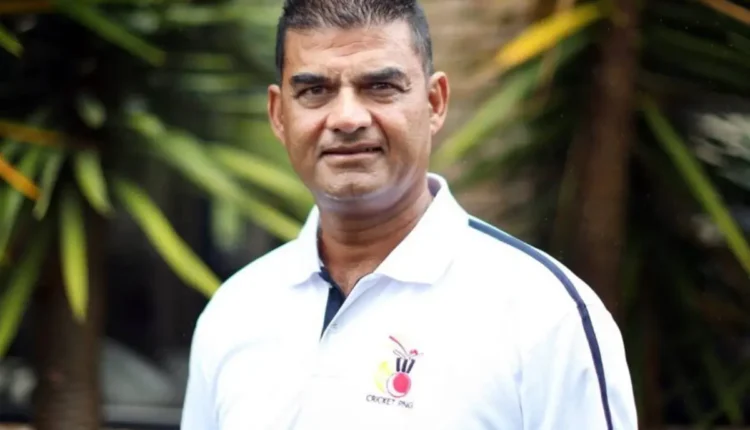The world of cricket is filled with stories of perseverance, innovation, and the relentless pursuit of dreams. Few cricketers embody these qualities as deeply as Dipak Patel, the Kenyan-born former New Zealand cricketer. His journey, from growing up in Nairobi to representing New Zealand on the world stage, is a tale of ambition, resilience, and a unique ability to adapt to new challenges.
Dipak Patel’s Early Life: The Foundations of Greatness
Born on October 25, 1958, in Nairobi, Kenya, Dipak Patel had the odds stacked against him. Cricket wasn’t a mainstream sport in Kenya, and the opportunities for a young boy from an immigrant family seemed limited. However, Patel’s passion for the game knew no boundaries. His family moved to England when he was just 10 years old, settling in the cricket-loving nation that would become his stepping stone to a greater future.
It was in England that Patel’s cricketing talents began to blossom. By 1976, at the young age of 18, Dipak Patel had secured a place with Worcestershire, a county cricket club where he spent the next decade honing his skills. Over 236 first-class matches, Patel amassed 9,734 runs and took 357 wickets, making him one of the most versatile players in the county scene. His elegant batting style and right-arm off-break bowling made him a key asset to the team.
A New Zealand Dream: Transitioning to International Cricket
Despite his success in England, Patel yearned for more—he wanted to represent a country at the highest level of cricket. Unfortunately, the national selectors in England overlooked him. This disappointment, however, opened a new door. Having spent several winters playing in New Zealand, Patel saw the potential for international success there. In 1986, he made the life-altering decision to emigrate to New Zealand.
New Zealand cricket fans were quick to notice his talents, and within a short span, Dipak Patel was called up to the national team. He made his Test debut against the mighty West Indies in 1987. While his initial performances were modest, with scores of 18 and 20 and a few overs bowled, it was clear that Patel had the grit to thrive on the international stage.
His international career spanned over a decade, where Dipak Patel played 37 Test matches and 75 One Day Internationals (ODIs) for New Zealand. Patel’s contributions to the team went beyond the stats; he became an invaluable middle-order batsman and a dependable off-spinner.
His highest Test score of 99 against England in 1992 remains a bittersweet memory, as Dipak Patel was heartbreakingly run out just shy of what would have been a well-deserved century. His best bowling figures came in the same year, when he took 6 wickets for 50 runs against Zimbabwe, showcasing his skill with the ball.
The 1992 World Cup: A Tactical Masterclass
The highlight of Patel’s career came during the 1992 Cricket World Cup. Known more for his batting and spin bowling, Patel was handed an unconventional role by the New Zealand team management—he was asked to open the bowling. This bold move was part of a strategic attempt to neutralize opposition batsmen who were intent on exploiting the first 15 overs by hitting over the infield.
Opening the bowling with an off-spinner was almost unheard of at the time, but Patel’s slower, looping deliveries baffled some of the world’s best batsmen. His first match in this role was against Australia, where his tactics paid off handsomely. Patel’s innovation and ability to adapt made him a key figure in New Zealand’s strong performance in the tournament, and he continued to open the bowling throughout the World Cup.
This innovative approach changed how limited-overs cricket was played, with captains and coaches rethinking their strategies for years to come. Patel’s role in the 1992 World Cup remains one of the most talked-about tactical decisions in cricket history.
Overcoming Challenges and Pursuing Coaching
Despite his contributions on the field, Dipak Patel faced his share of challenges. His cricketing journey was not without its hurdles—whether it was the initial lack of recognition in England or the ups and downs of his Test career. Yet, Patel’s ability to push through adversity and constantly evolve set him apart.
After retiring from international cricket in 1997, Dipak Patel shifted his focus to coaching. His vast experience and deep understanding of the game made him a natural mentor for young cricketers. He coached at the provincial level in New Zealand, notably for Central Districts and the New Zealand under-19 team, nurturing future talent with the same passion and dedication that had defined his own playing days.
In 2014, Patel took on a new challenge as the head coach of the Papua New Guinea national cricket team. Under his leadership, PNG made its One Day International (ODI) and Twenty20 International (T20I) debuts. Patel’s coaching career continued to flourish, although it wasn’t without its challenges. His contract with PNG was unexpectedly terminated in 2017, despite an agreed extension, but his contributions had already left an indelible mark on the team’s development.
Also Read:India Will Use Full Military Power if Threatened, Says Defence Minister Rajnath Singh

